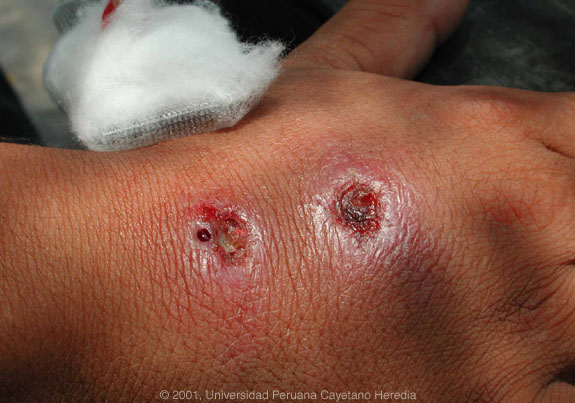2001 Case #3 |
 |
|
| (Links to Other 2001 Cases are at bottom of this page) | ||
2001 Case #3
|
 |
|
| Diagnosis: Leishmaniasis due to presumed |
| Discussion: The major differential given the onset of the lesions on the hand and the lymphatic distribution would include leishmaniasis, sporotrichosis (endemic in Peru), atypical mycobacteria, and nocardiosis. In Peru leishmaniasis would be by far the most common. The painless nature of the ulcerative lesions, the characteristic heaped up borders, relatively clean bases are most indicative of leishmaniasis.
A needle aspirate of the heaped up border of the lesion revealed diagnostic intracellular amastigote forms of Leishmania on giemsa stain. PCR for speciation is pending. Of note, 3 of the other 7 accompanying policemen also have biopsy proven leishmaniasis with from 2 to 5 lesions. The ulcers are in varying sizes (0.5 to In South America it is important to distinguish Leishmania species that cause only cutaneous disease from the mucocutaneous species. Both cause initial skin ulcers but with mucocutaneous species, from months to years after treatment or healing of the skin ulcers, severe destructive recurrence may occur in the mucosal surfaces of the naso and oropharynx. Although speciation is pending in the Peruvian jungle, leishmaniasis is essentially exclusively due to Leishmania braziliensis, a species causing mucocutaneous disease. The patient was given therapy with pentavalent antimony (Glucantime) in a dose of
|
